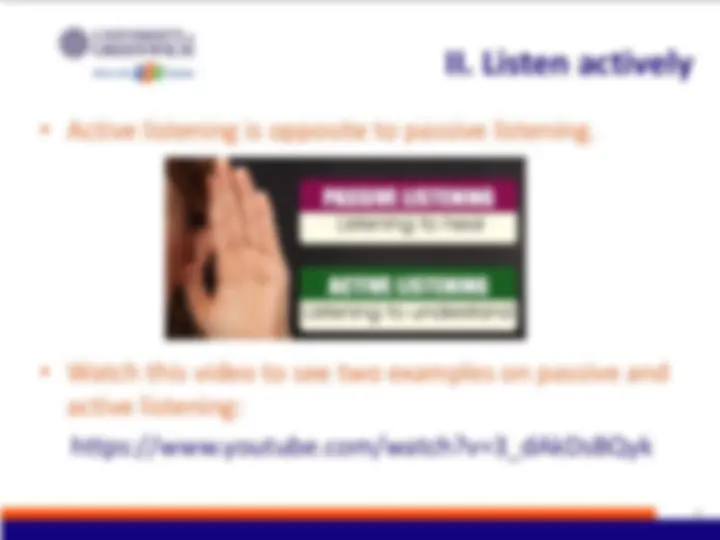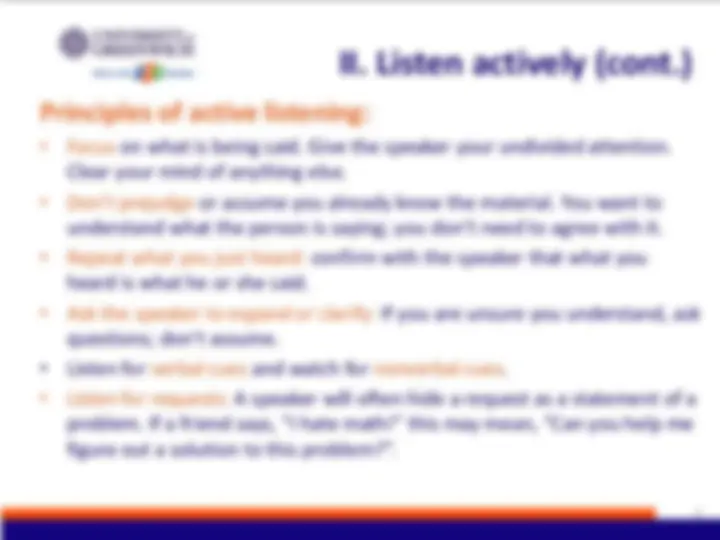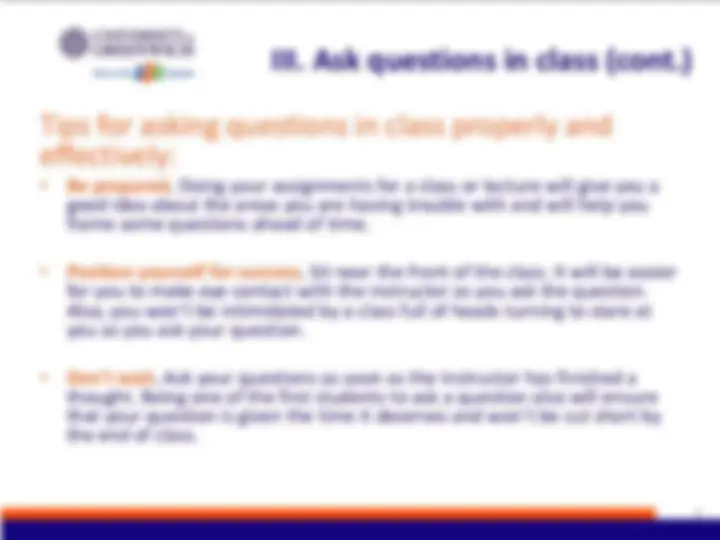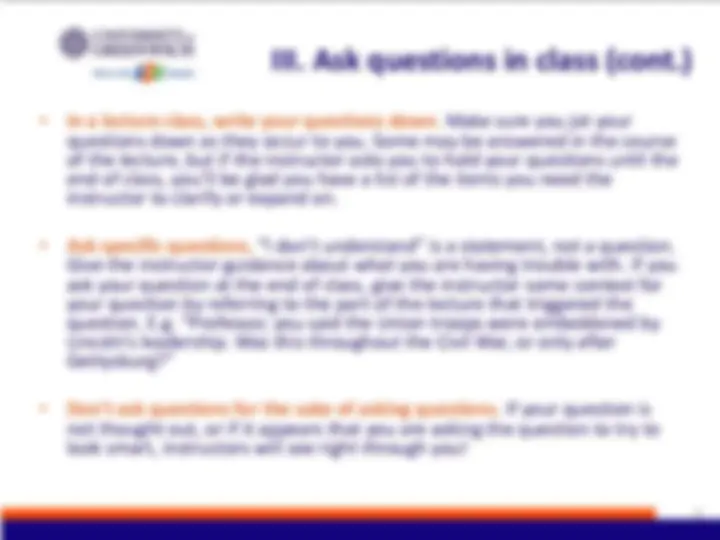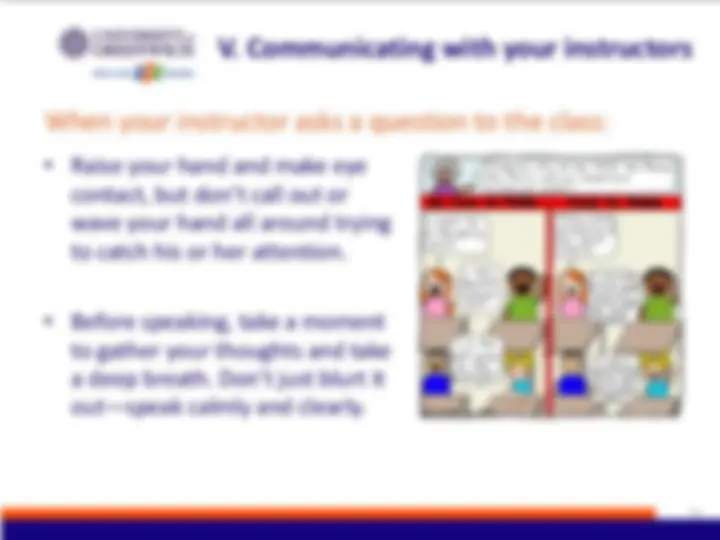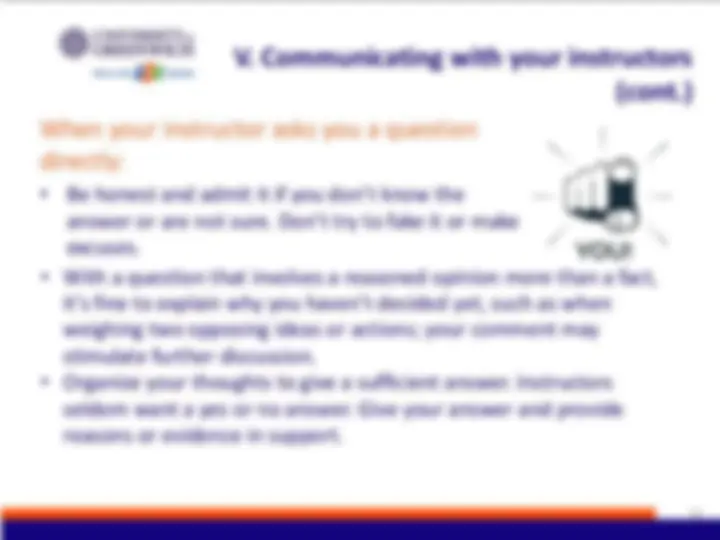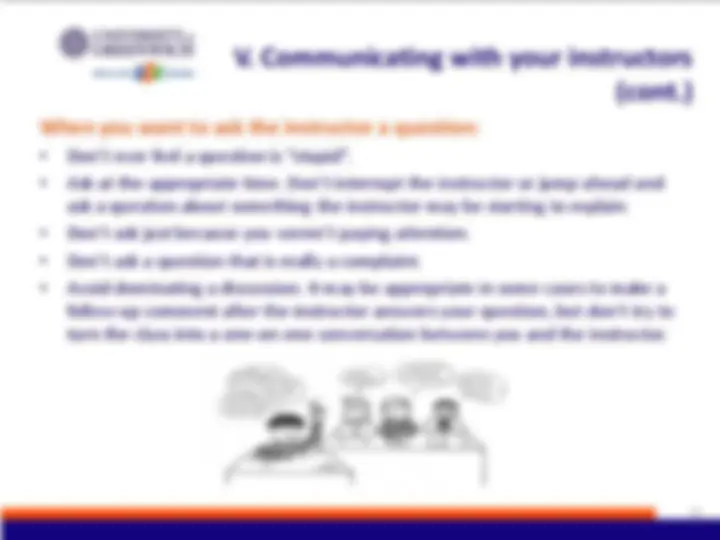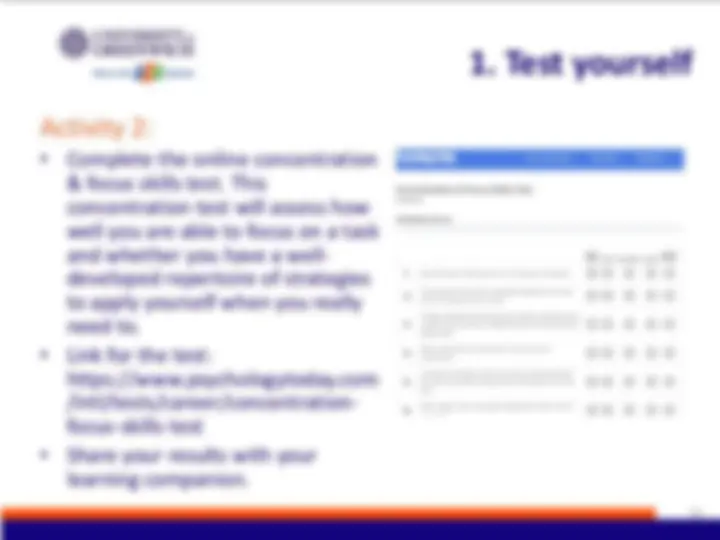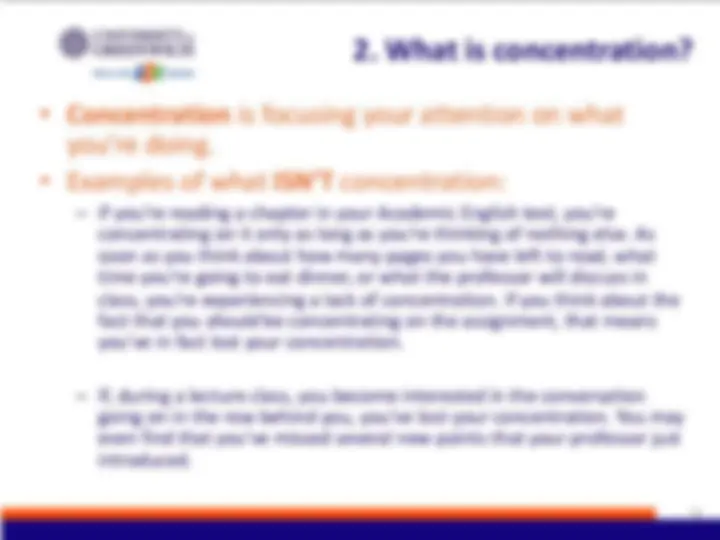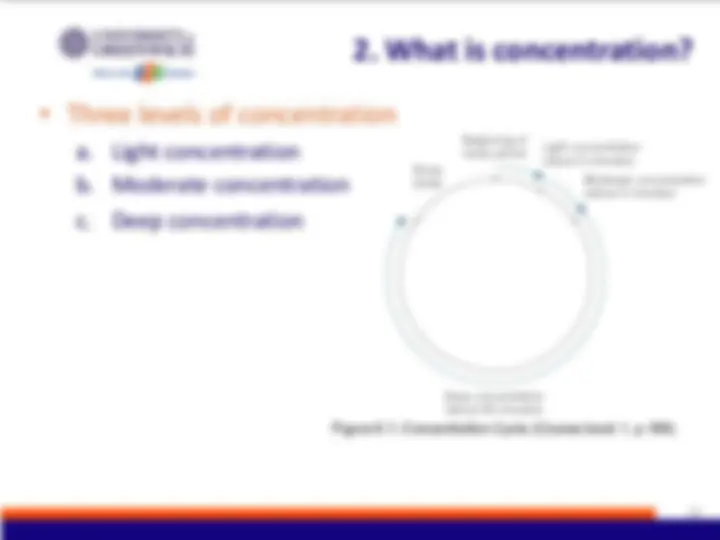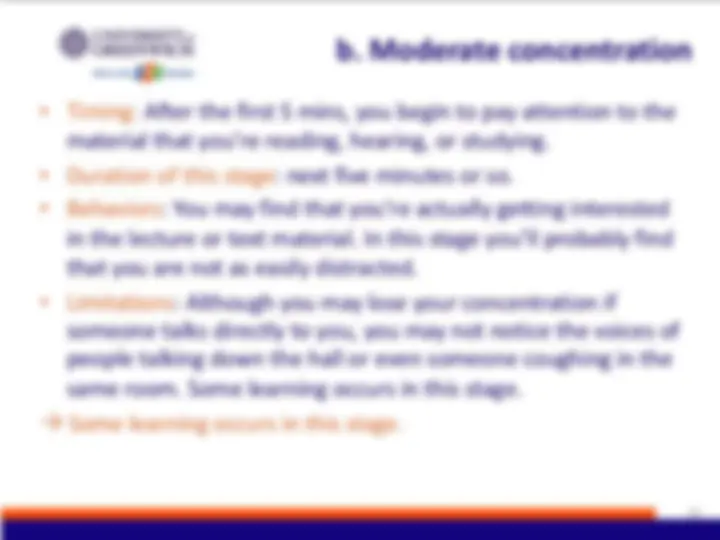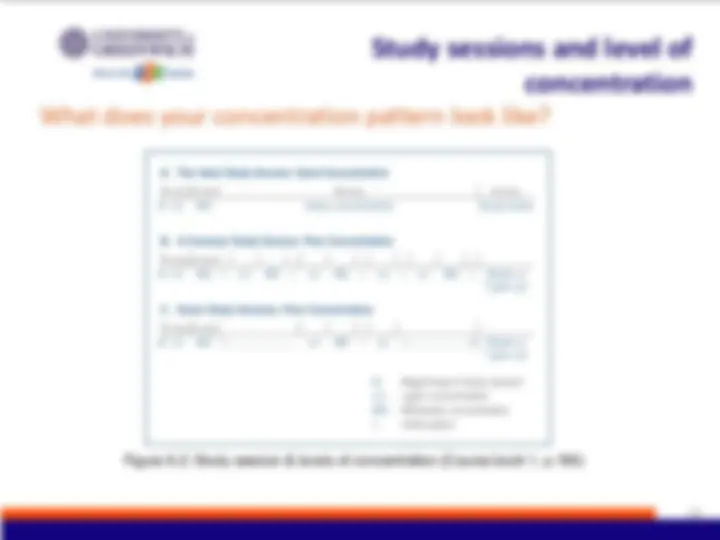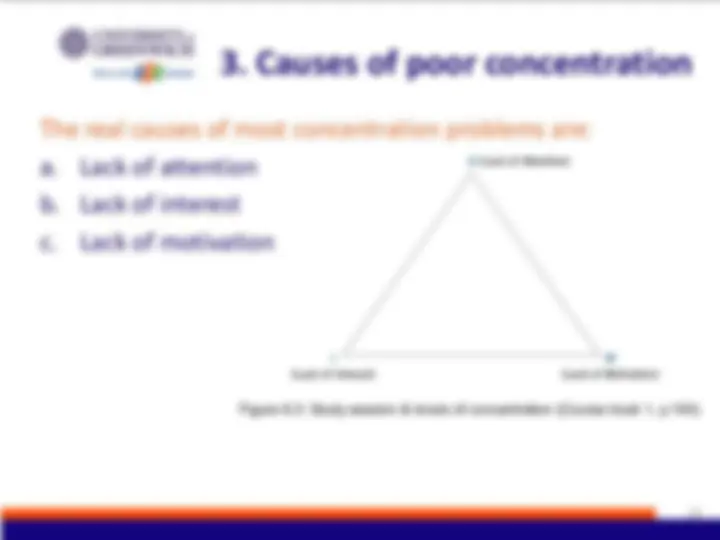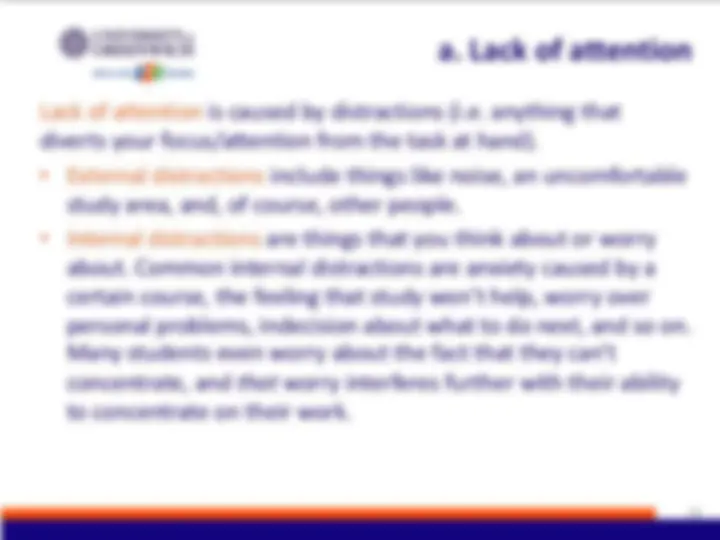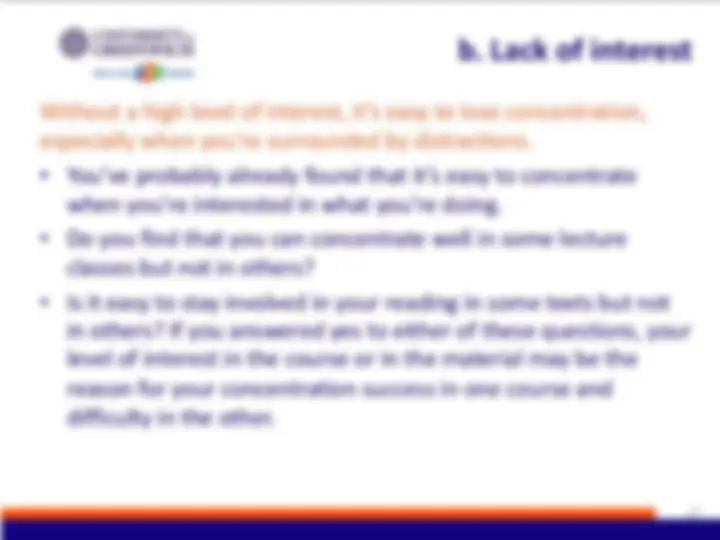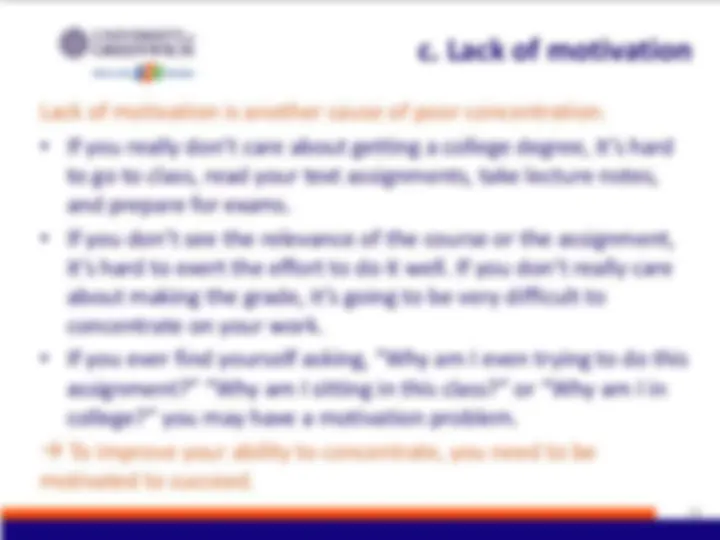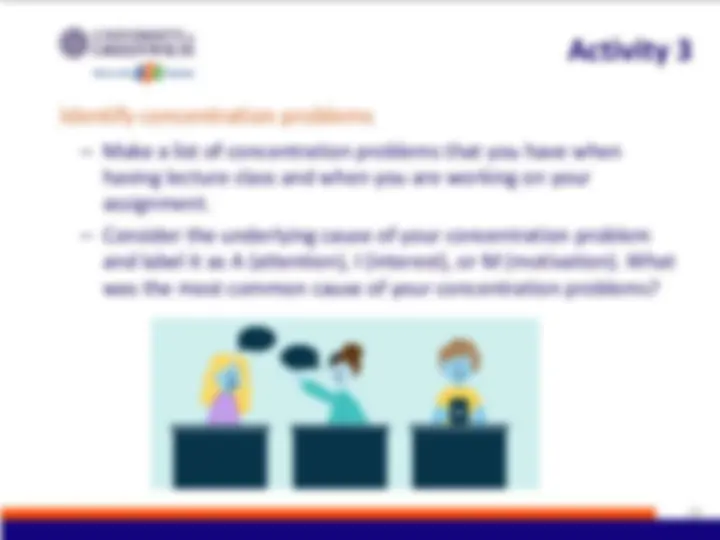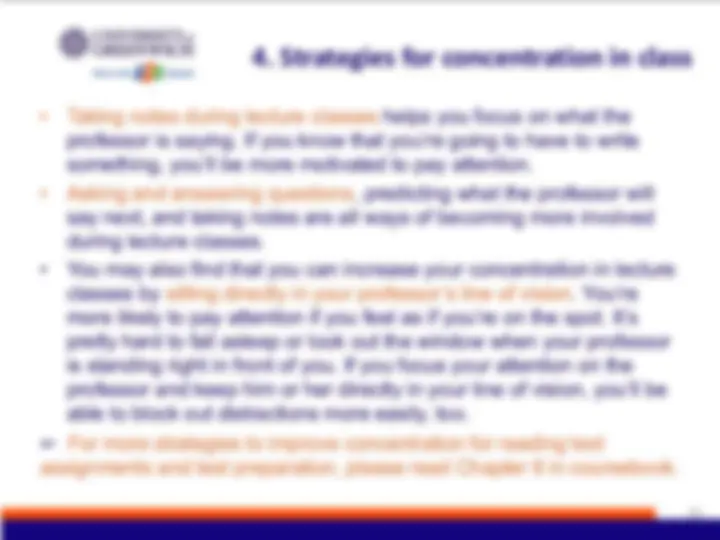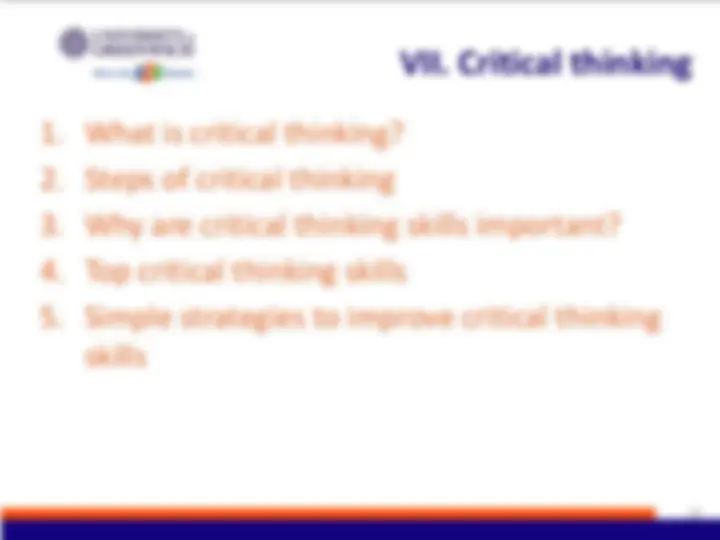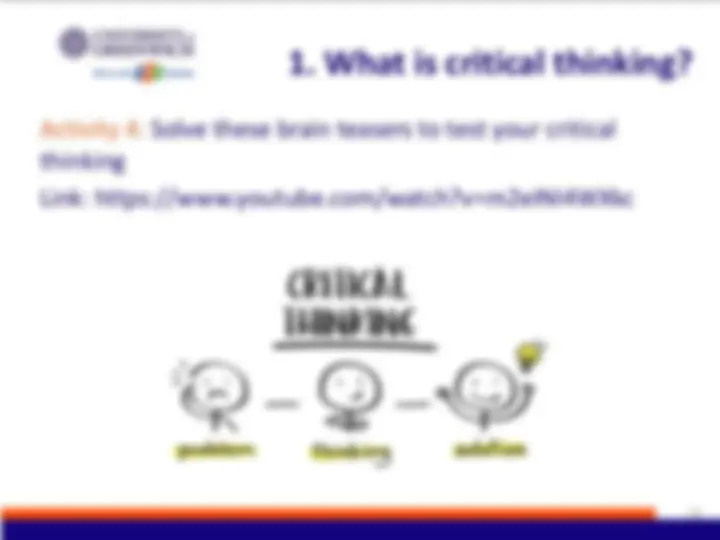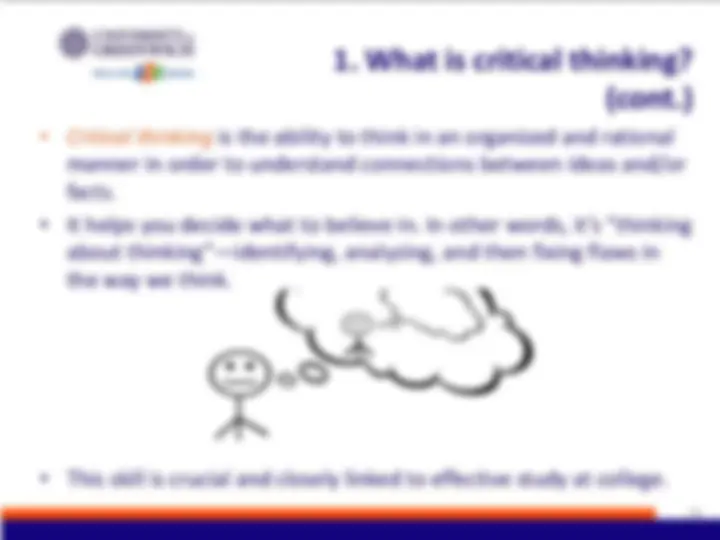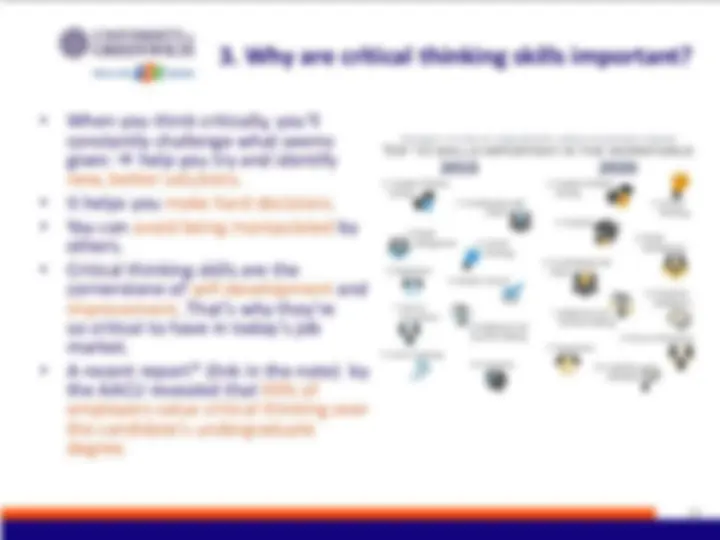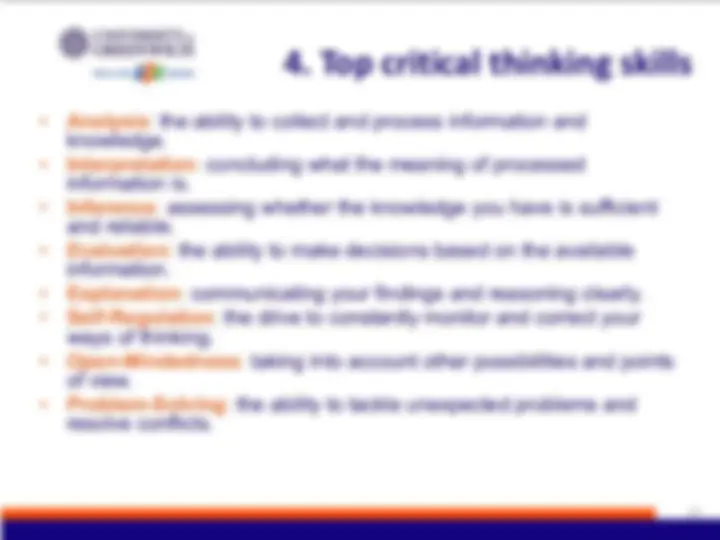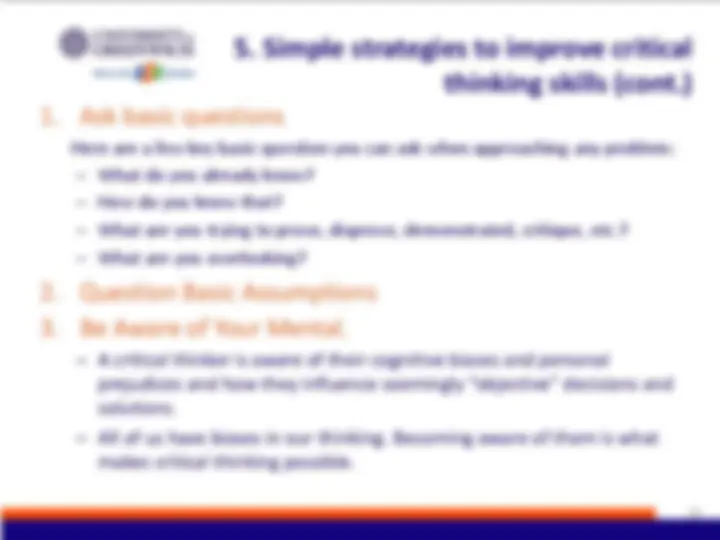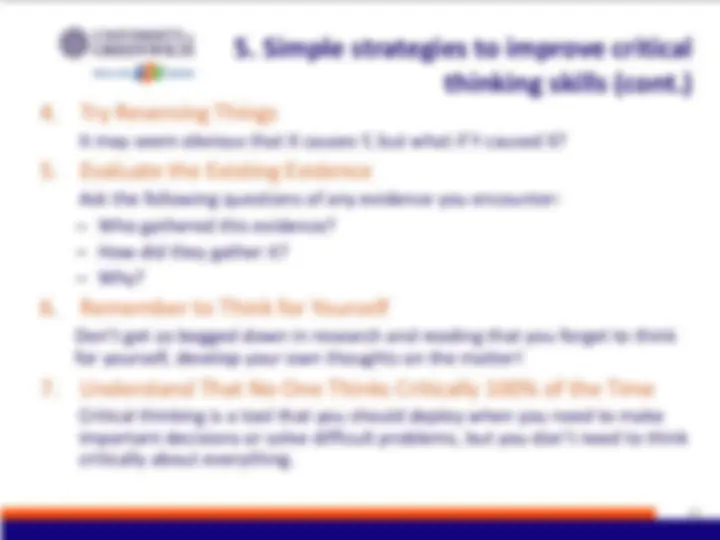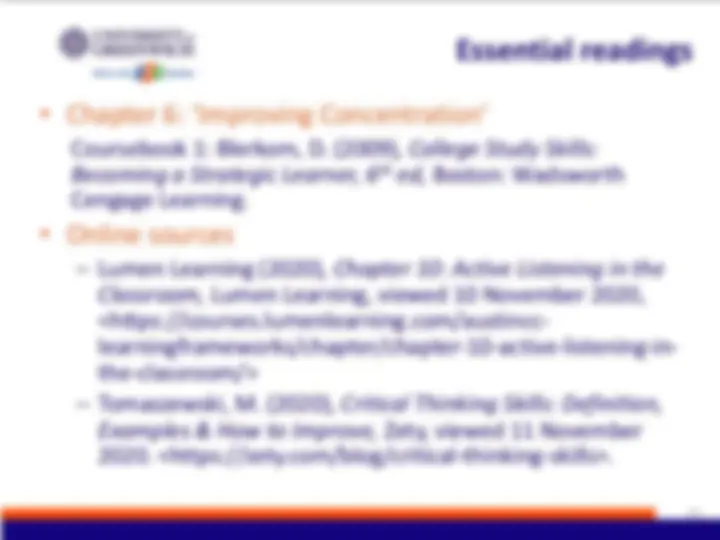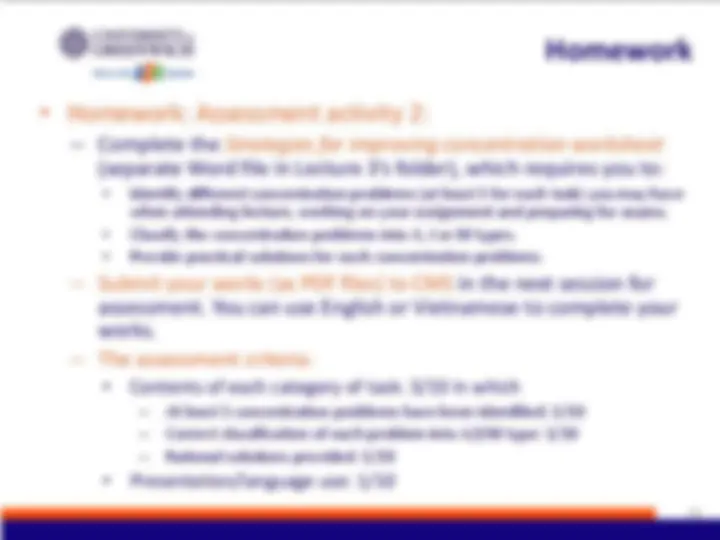Download Soft skills: successful and more Summaries Communication and Presentation Skills in PDF only on Docsity!
Lecture 3
Classroom communications
I. The role of classroom communications
II. Listen actively
III. Ask questions in class
IV. Guidelines for participating in class
V. Communicating with your instructors
VI. Concentration skills
VII.Critical thinking
Outline
- Active listening is opposite to passive listening.
- Watch this video to see two examples on passive and active listening: https://www.youtube.com/watch?v=3_dAkDsBQyk II. Listen actively
Principles of active listening:
- Focus on what is being said. Give the speaker your undivided attention. Clear your mind of anything else.
- Don’t prejudge or assume you already know the material. You want to understand what the person is saying; you don’t need to agree with it.
- Repeat what you just heard: confirm with the speaker that what you heard is what he or she said.
- Ask the speaker to expand or clarify: If you are unsure you understand, ask questions; don’t assume.
- Listen for verbal cues and watch for nonverbal cues.
- Listen for requests: A speaker will often hide a request as a statement of a problem. If a friend says, “I hate math!” this may mean, “Can you help me figure out a solution to this problem?”. II. Listen actively (cont.)
- Are you shy about asking questions? Do you think that others in the class will ridicule you for asking a dumb question?
- Students sometimes feel this way because they have never been taught how to ask questions.
- Practice these steps, and soon you will be on your way to customizing each course to meet your needs and letting the instructor know you value the course. III. Ask questions in class
Tips for asking questions in class properly and effectively:
- Be prepared. Doing your assignments for a class or lecture will give you a good idea about the areas you are having trouble with and will help you frame some questions ahead of time.
- Position yourself for success. Sit near the front of the class. It will be easier for you to make eye contact with the instructor as you ask the question. Also, you won’t be intimidated by a class full of heads turning to stare at you as you ask your question.
- Don’t wait. Ask your questions as soon as the instructor has finished a thought. Being one of the first students to ask a question also will ensure that your question is given the time it deserves and won’t be cut short by the end of class.
III. Ask questions in class (cont.)
Participation has these advantages:
- Helps you concentrate and focus.
- Helps you sort out what you know and don't know.
- Helps you prepare for exams and quizzes.
- Gives you practice speaking before groups.
- Teaches you the etiquette of participation, which helps you contribute more effectively in academic and nonacademic settings. IV. Guidelines for participating in class
Guidelines for effective class participation:
- Set yourself up for success by coming to class fully prepared.
- Sit in the front with a good view of the instructor, board or screen, and other visual aids.
- Remember that your body language communicates as much as anything you say.
- Pay attention to the instructor’s body language, which can communicate much more than just his or her words.
- Take good notes, but don’t write obsessively—and never page through your textbook (or browse on a laptop).
- Don’t eat or play with your cell phone. IV. Guidelines for participating in class (cont.)
- Raise your hand and make eye contact, but don’t call out or wave your hand all around trying to catch his or her attention.
- Before speaking, take a moment to gather your thoughts and take a deep breath. Don’t just blurt it out—speak calmly and clearly. V. Communicating with your instructors When your instructor asks a question to the class:
When your instructor asks you a question
directly:
- Be honest and admit it if you don’t know the answer or are not sure. Don’t try to fake it or make excuses. V. Communicating with your instructors (cont.)
- With a question that involves a reasoned opinion more than a fact, it’s fine to explain why you haven’t decided yet, such as when weighing two opposing ideas or actions; your comment may stimulate further discussion.
- Organize your thoughts to give a sufficient answer. Instructors seldom want a yes or no answer. Give your answer and provide reasons or evidence in support.
What to Do If…
- Your instructor speaks too fast. Crank up your preparation. The more you know about the subject, the more you’ll be able to pick up from the instructor. Exchange class notes with other students to fill in gaps in notes. You might ask the instructor—very politely, of course—to slow down, but habits like speaking fast are hard to break!
- Your instructor has a heavy accent. Sit as close to the instructor as possible. Make connections between what the instructor seems to be saying and what he or she is presenting on the board or screen. Ask questions when you don’t understand. The more you speak with the instructor the more likely you will learn to understand the accent.
- Your instructor speaks softly or mumbles. Sit as close to the instructor as possible and try to hold eye contact as much as possible. Check with other students if they are having problems listening, too; if so, you may want to bring the issue up with the instructor. It may be that the instructor is not used to the lecture hall your class is held in and can easily make adjustments. V. Communicating with your instructors (cont.)
- Test yourself
- What’s concentration?
- Causes of poor concentration
- Strategies for concentration in class
- Benefits of improved concentration VI. Concentration skills
- Concentration is focusing your attention on what you’re doing.
- Examples of what ISN’T concentration:
- If you’re reading a chapter in your Academic English text, you’re concentrating on it only as long as you’re thinking of nothing else. As soon as you think about how many pages you have left to read, what time you’re going to eat dinner, or what the professor will discuss in class, you’re experiencing a lack of concentration. If you think about the fact that you should be concentrating on the assignment, that means you’ve in fact lost your concentration.
- If, during a lecture class, you become interested in the conversation going on in the row behind you, you’ve lost your concentration. You may even find that you’ve missed several new points that your professor just introduced.
2. What is concentration?
- Three levels of concentration a. Light concentration b. Moderate concentration c. Deep concentration
2. What is concentration?
Figure 6.1: Concentration Cycle (Course book 1, p.189)


